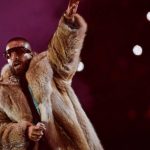June 3, 2023, 4:00 AM
June 3, 2023, 4:00 AM
A few days ago, two and a half years of the mandate of President Luis Arce Catacora were completed. In his management message, full of optimism and hope, they highlighted, among various things, the economic growth of Bolivia in 2022, which was 3.48 %, reaching a nominal GDP of $us. 44,315 million; In the same sense, our GDP per capita increased by 7.4%, being the past management of $us. 3,691. He also recognized the illiquidity of US dollars in the country, arguing that it is something that is happening worldwide due to the effects of the war in Europe and the current situation that the US economy is experiencing, with a constant rise in interest rates. to curb inflation in your country.
Among other topics that I analyze, something that caught my attention was the data of our foreign trade, where I emphasize the historical record of exports that we had last year, for $us. 13,652.8 million, something that is undoubtedly positive for our economy, the bad thing is that they forgot about the other side of the coin, our imports. In 2022 we imported, also with a historical record, a total amount of $us. 13,049.4 million, with an annual trade surplus of $us. 603.4 million, a small difference in our favor. Something striking is that, from August 2022 to March 2023, each month there was a trade deficit, reaching an accumulated value of $us. 1,408 million; Comparing March 2023 with March 2022, our imports grew by 17% and our exports decreased by 20%, the trend is to import more in volume and especially in value.
Reviewing the latest data from the INE, in its April 2023 COMEX bulletin, most of our “major economic categories presented” a negative trade balance last year; In 2022, the “manufacturing industry” was the main economic sector that exported from the country, with $us. 6,931.5 million, this 2023 already has an accumulated value of $us. 1,294.3 million, thanks to good prices in international markets.
In the case of “fuels and lubricants” we import $us. 4,319.7 million, 92% more than in 2021, for this reason, it was the item with the highest import spending in Bolivia last year; Comparing March 2023 with March 2022, our purchases grew by 19%, this year, from January to March, we already spent $us. 711.6 million in the purchase of fuel for our country, meaning a significant outflow of foreign currency. On the other side of the balance of the hydrocarbon sector, “natural gas”, in 2022 its export decreased by 32%, from March 2022 to March 2023 its sale abroad fell by 21%; This year, until March, we exported a value of $us. 575.2 million, which obviously gives us a deficit in the sector, more purchase of diesel and gasoline and less sale of natural gas.
What is the situation with China?
Let’s quickly review our foreign trade with this Asian country, in 2022 we had a negative trade balance for $us. 1,775 million, last year a record was set in trade relations between the two nations, with a level of imports of $us. 2,546 million, but only from exports for $us. 788 million; Reviewing the data provided by the IBCE, from 2000 to 2022 every year we had a trade deficit with the Chinese, for example, imports from this country, during this period, grew by 3,537%.
From January to March 2023, we had an accumulated trade deficit of US$. 349.9 million; a quick piece of information, so far this year we have exported a value of $us to China. 175.1 million and we imported $us. 558.5 million.
What products do we trade with this economy?
We export around only 66 products, among which minerals such as silver, zinc, and non-traditional ones such as meat and wood stand out. We import approximately 5,000 different types of goods from China, mainly vehicles, tires, herbicides, motorcycles, and others. If we take contraband products into account, the trade deficit to the detriment of our country would be much larger. In fact, China is currently the 5th country to which we export, with a participation of barely 8% of our bilateral trade; instead it is the 1st country to which we import, with a percentage of 20%.
Currently, more than 80% of international trade is carried out in US dollars and at least 60% of the world’s central bank reserves are in this currency. If we go to the ranking of the most expensive currencies in the world, this list is headed by the Kuwaiti dinar, Bahraini dinar, Omani rial, and below the Swiss franc, the European euro, and the American dollar, in positions 7, 8. and 9 respectively, the yuan does not appear in it; This classification was made based on its exchange rate with respect to the US dollar and its level of controlled inflation, signs of a stable and strong economy.
If we look at the list of the most internationally stable currencies, the No. 1 is the Swiss franc, then the Japanese yen, the Norwegian krone, the Swedish krona, the euro, the Singapore dollar, the US dollar, the Australian dollar, the British pound and the Canadian dollar, as we can see. again the yuan does not appear at all. So why work with this Asian currency?
It is not known if the president knew these data in depth, since for obvious reasons foreign trade with China in yuan would not suit us, for two simple reasons, we would do him a huge favor by paying for our imports in their local currency, appreciating the The market is the same and the demand is increasing relatively, but will they pay us in yuan for our foreign trade? This would be the second disadvantage, the yuan is a very rarely used currency, with little value and is not considered stable either, which would force us once again to resort to the US dollar, since we currently do our foreign trade in this currency and therefore common, we cancel our bilateral and bilateral debt in the US currency. I can’t imagine any country accepting our yuan when we import goods, much less the World Bank accepting the same to pay off our foreign debt.
Finally, apparently it is more an ideological or political desire of certain populist countries in our region than a long-term project, at least that is concluded for the moment, considering the hegemony of the US dollar, despite its tendency to decline. However, there is also a clear need to seek alternatives, for some nations in the short term, given the scarcity or limited access to the US dollar in their economies or internal markets, which due to an unbalanced management of their international reserves and high public spending gave This gave rise to a delicate situation, which in the case of Bolivia meant a 77% drop in its RIN from 2014 to 2022, and there is currently a lot of uncertainty in the exchange market.
So, apparently, yuan no!

















